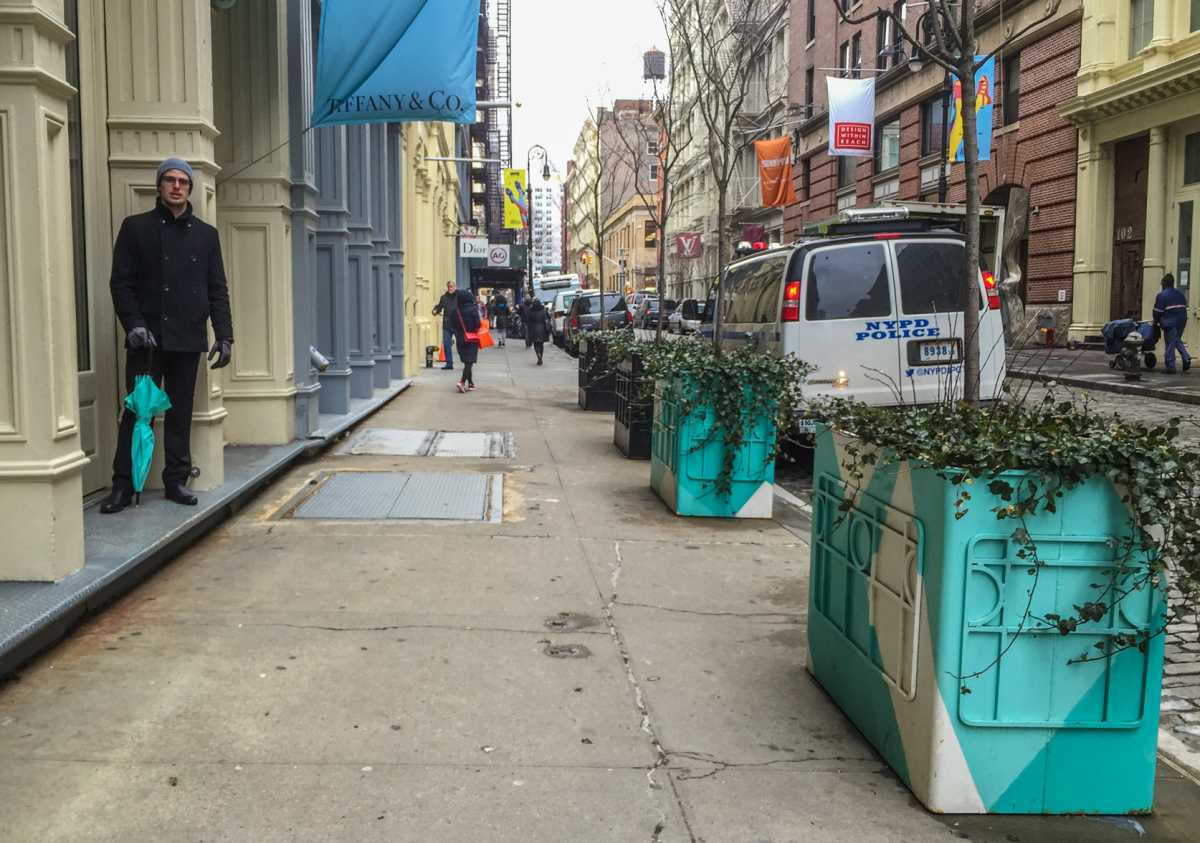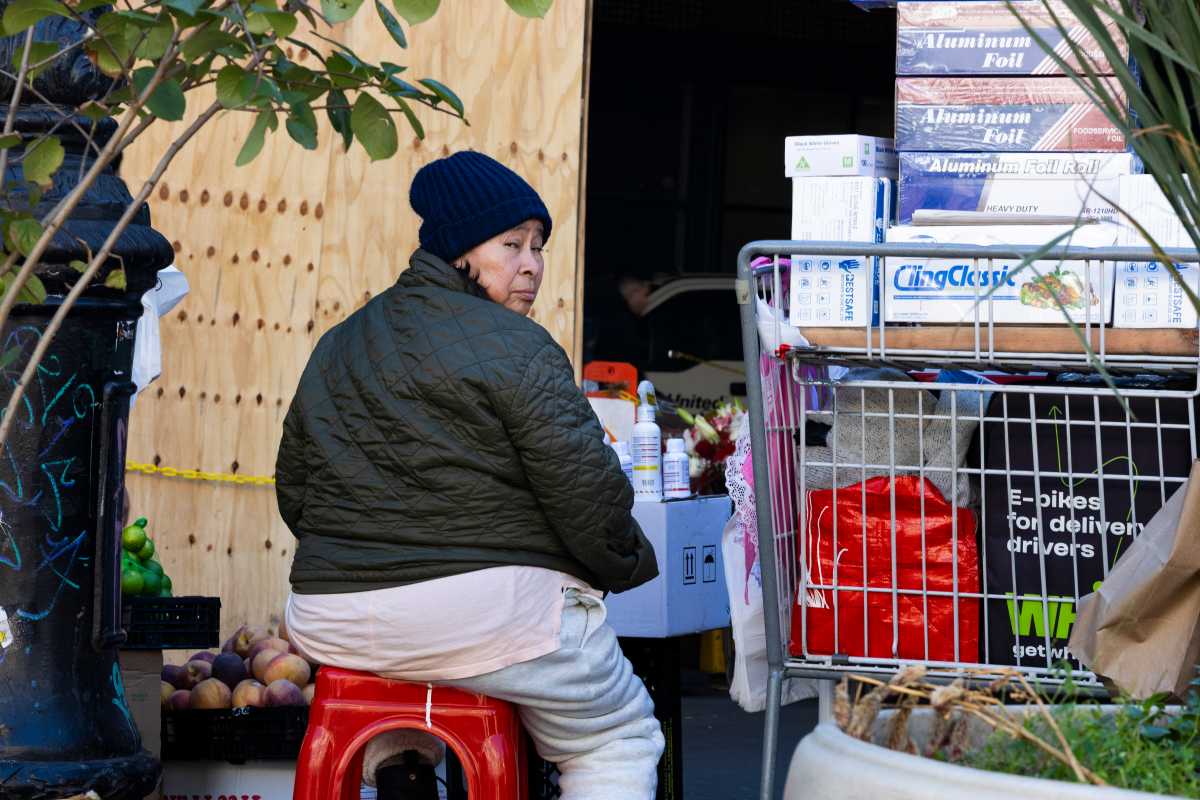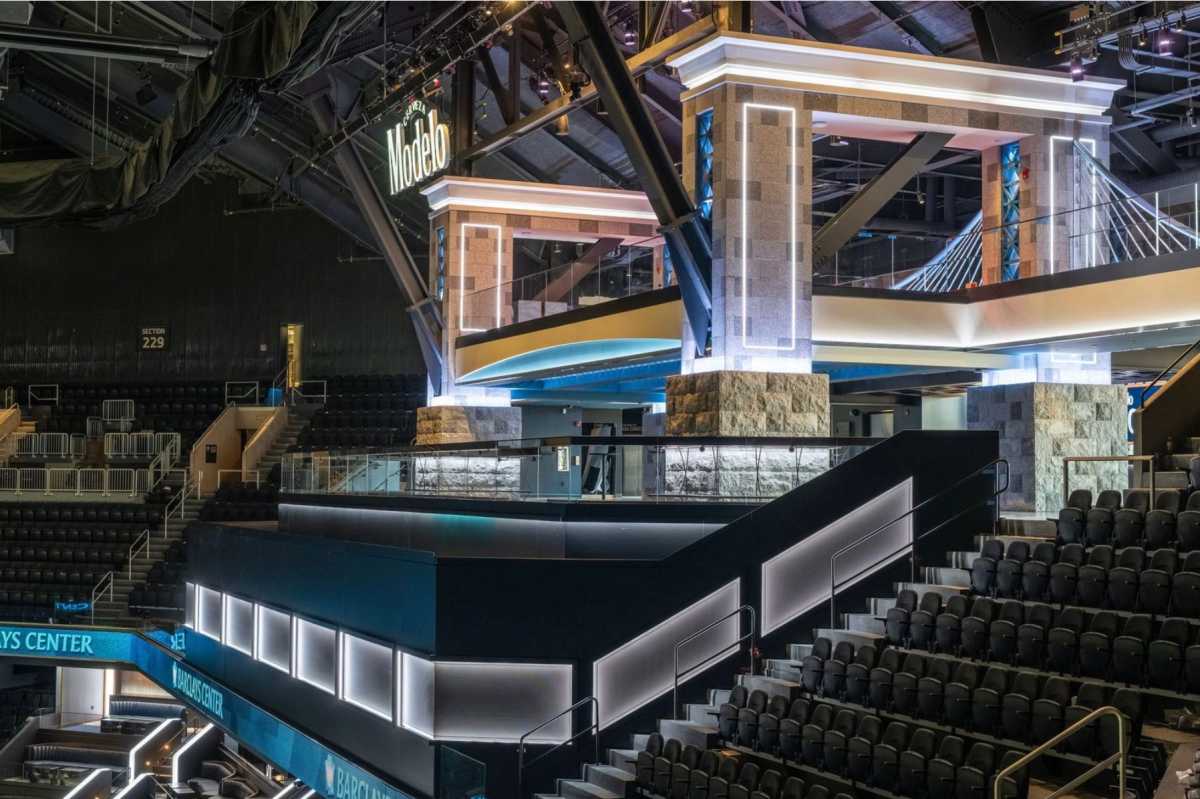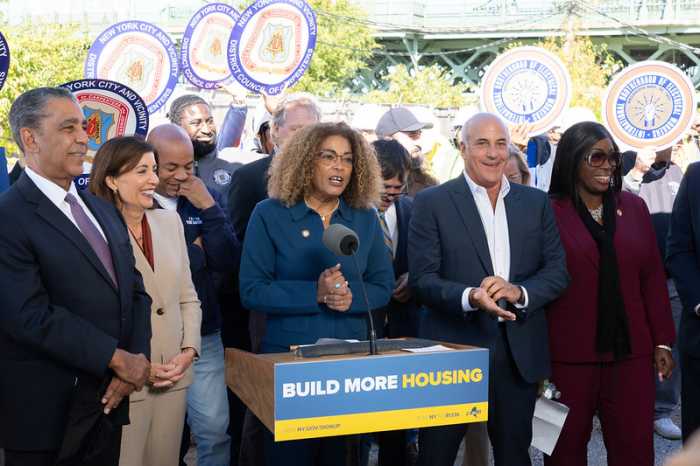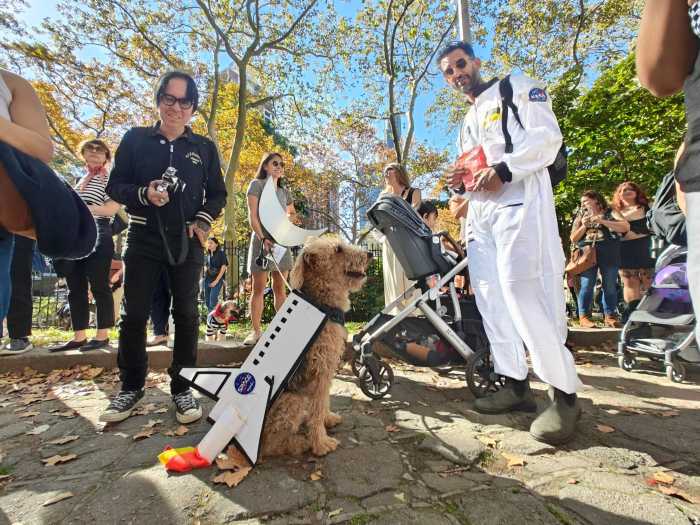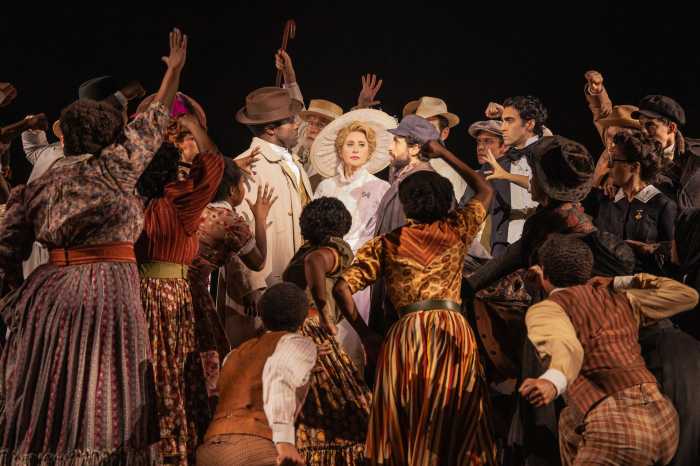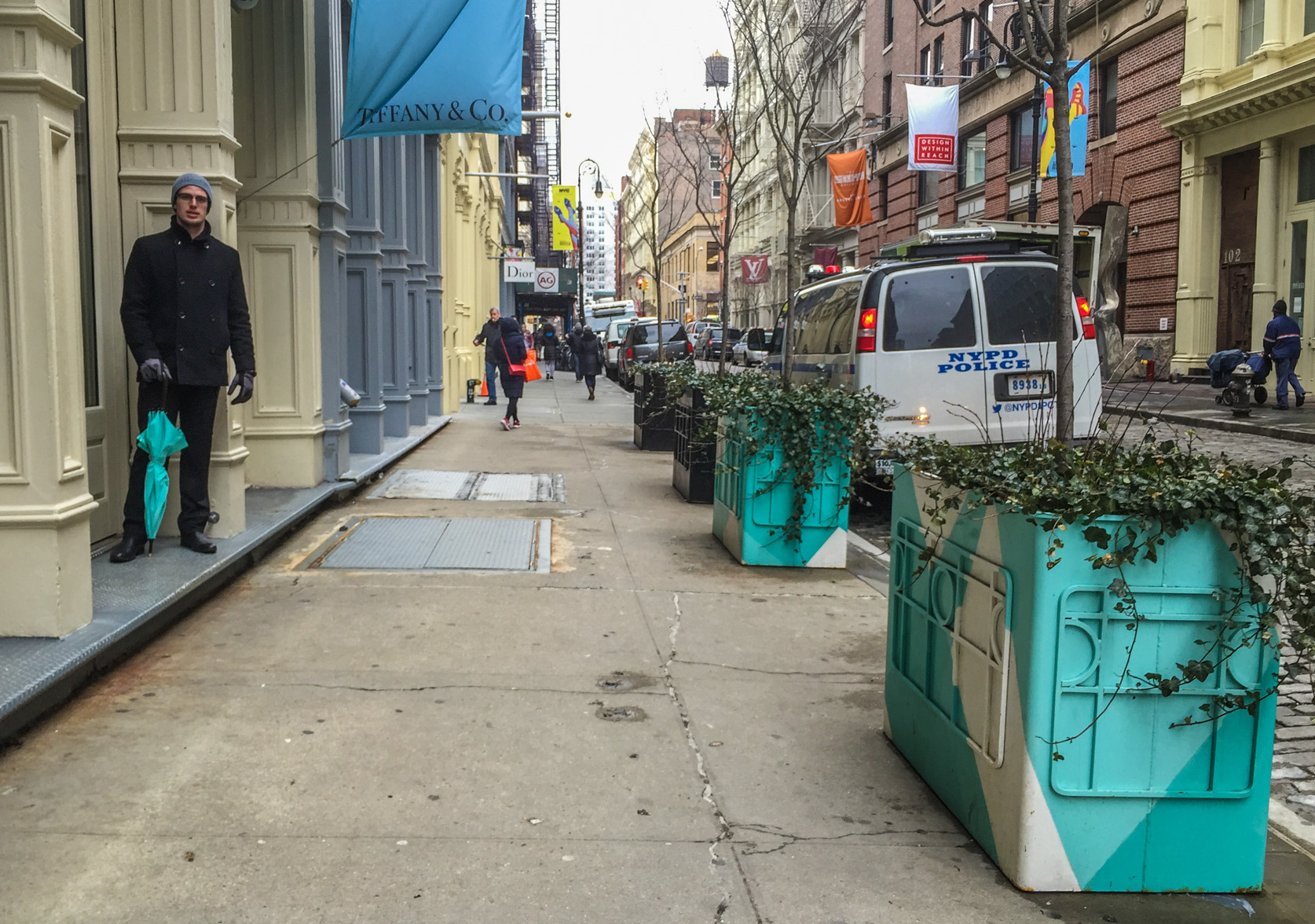
BY ALBERT AMATEAU | A Community Board 2 committee last week wrestled with the legality of several planters, installed without city approval on the busy sidewalks of the Soho Cast-Iron District.
ACE (Association of Community Employment), a local service agency that sponsors planters, asked the board’s Traffic and Transportation Committee on Feb. 4 to support its application to the city to legalize a dozen planters on Prince and Greene Sts.
The planters cited in ACE’s bid for legalization include five near 138 Prince St. at W. Broadway, one at 109 Prince St., one each at 100 Greene St. and 99 Greene St., and two each at 97 Greene St. and 93 Greene St., all installed in the last couple of years. Other planters in the district have been in place for nearly two decades.
The problem, as Maury Schott, the committee’s vice chairperson, noted, is that the planters violate several city transportation regulations, including failure to leave at least an 8-foot-wide clearance for pedestrians, being less than 10 feet from siamese connections or from fire hydrants and being clear of a shop or residential entrance.
“At 109 Prince, there is only 5 feet between the planter and a handicap ramp,” said Schott, a Soho resident who walked the district last week to survey the situation.
“There are many other planters in the area that are not in this application and none of those were approved,” added Schott. He also noted that, in addition to Department of Transportation approval, the planters probably need a Landmarks Preservation Commission review, since the area south of Houston St. between Thompson and Lafayette Sts. is a designated historic district.
The Department of Information Technology and Telecommunications, with jurisdiction over street telephones and new curbside LinkNYC Wi-Fi kiosks, is probably also involved.
“These agencies have zero communication with each other,” said Schott, adding, “Apparently you can do anything you want as long as no one complains.”
Jim Martin, executive director of ACE — founded more than 20 years ago by Henry Buhl, a wealthy Soho resident — spoke on behalf of the organization. Martin told the committee last week that ACE employs homeless men and women to clean planters and tend the trees in them. Since its founding, ACE has expanded to other neighborhoods where its employees, in turn, help maintain those areas. Over the years, many ACE employees have gone onto permanent homes and jobs, Martin said.
Regarding the planters in the recent application, Martin said, “We were told that we could install the planters as long as no one complained. But someone did complain, so we applied to the city for a new revocable consent.”
“Wait a minute, who told you that?” interrupted Shirley Secunda, the committee chairperson, adding, “You can’t do that.”
“That was our understanding,” Martin insisted.
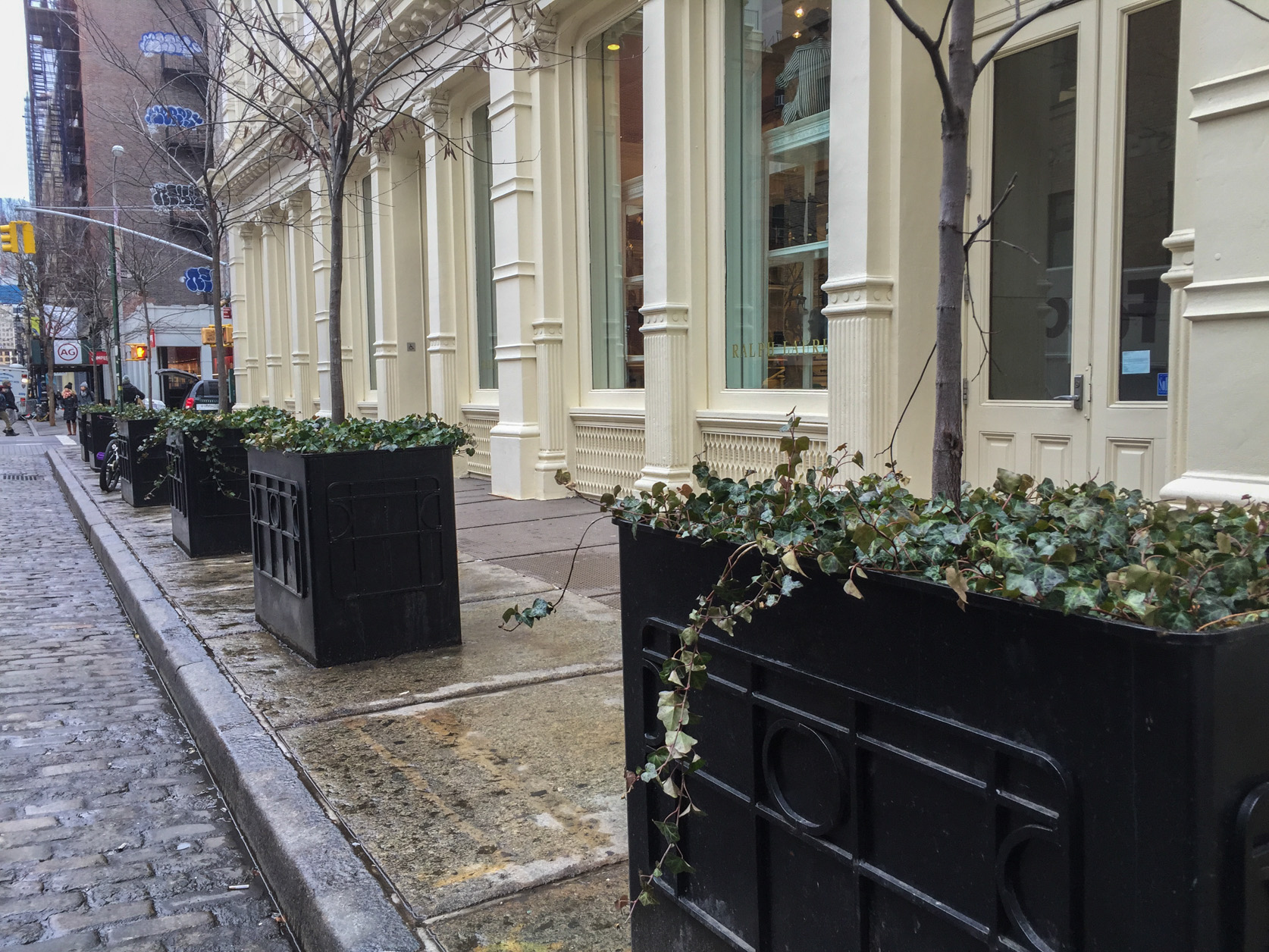
Property owners and merchants say the planters are a boon to the neighborhood. But street vendors who ply the Soho district complain that the planters are there to keep them off neighborhood sidewalks. That was borne out by Paul Tschinkel, of 138 Prince St., who spoke last week in support of legalizing the planters.
“This stretch of Prince was, for the most part, a haven for vendors; there was one vendor after another, even in front of the store entrances,” Tschinkel said. “I went to Henry Buhl for planters and our co-op board agreed to pay for their maintenance. Now it’s a very pleasant place to walk,” Tschinkel added.
Tiffany & Co., whose Soho branch is at 97 Greene St. — where two planters are out in front on the sidewalk — also appreciates the planters, said Ekta Jaisinghani, director of the branch.
Tiffany has painted the conventionally black planters in front of its shop with the company’s famous Tiffany turquoise blue. Other retailers have painted their store logos on their planters. But the practice does not sit well with many neighbors.
Pete Davies, a longtime Soho resident, said, “The over-commercialization of public space is a real problem.” He added that neighborhood groups that supported the planters are now against what they consider a violation of public space.
Colleen Chattergoon, a D.O.T. representative, told the committee that the department will have to consider compliance with city rules and regulations before making a decision.
Speaking for the committee, Schott said, “All we can do is lay out the rules. We don’t make the decisions; we only make recommendations.”
George Haikalis, a public member of the C.B. 2 Traffic and Transportation Committee, said, “There is no overriding plan about what we can put on the streets. It’s all ad hoc — a mockery of ad hoc-ery.”
Soho, with its century-old cast-iron loft buildings, has changed over the past several decades from factories and warehouses to artists’ studios, then changed again to a bustling district of high-end shops, art galleries and residential co-ops.
Where most Manhattan residential areas have curbside tree pits, sidewalks in Soho are built over the basement vaults of former warehouses and manufacturing spaces. Planters have become a way to green an area where it’s otherwise impossible to have trees.



